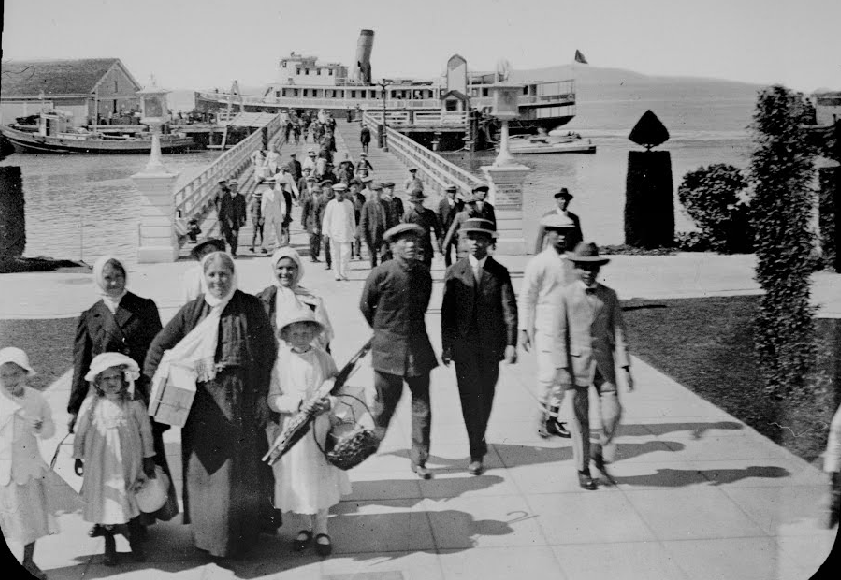Angel Island: “Ellis Island of the West”

by Tony Hanson
It’s a fair bet that most genealogists are familiar with Castle Garden (8 million immigrants) and Ellis Island (12 million immigrants). However, many people are less familiar with Angel Island. I became aware of it on a recent trip to San Francisco and discovered that it has a fascinating history.
The Angel Island U.S. Immigration Station, often referred to as the “Ellis Island of the West”, is located on the largest island in San Francisco Bay. Its story begins with Chinese immigrants who were recruited as mine workers during and after the 1848 California Gold Rush. They were also recruited as farm workers and served as a major source of labor during the construction of the trans-continental railroad.

Angel Island, 1925, glass lantern slide, artsandculture.google.com
A series of economic crises in the latter part of the 1800s led to a scarcity of jobs. Resentment towards Chinese laborers, who would work for lower wages, grew. In response to this (and other factors), the U.S. Congress passed the Chinese Exclusion Act of 1882 (additional laws were passed in 1888 and 1902) that placed severe restrictions on Chinese citizens who wished to immigrate to the United States.
Japanese immigrants had no such restrictions at this time, which led to an increase in the number of immigrants from Japan. However, they soon became the focus of the animosity that had been directed towards Chinese immigrants. In 1907, the US and Japan reached an agreement that also placed severe restrictions on Japanese citizens who wanted to immigrate to the United States.
US immigration officers met ships arriving in San Francisco to inspect the documents presented by each immigrant: Those with questionable documentation were detained for further examination. At first, they were detained on ships anchored in the harbor for that purpose. In 1892 facilities were established near the harbor, but they eventually proved to be inadequate for the increasing number of detainees.
Angel Island was declared a military reserve by the US Government in 1850. It was fortified to defend San Francisco from attack by Confederate forces during the Civil War and remained a military installation through WWII. In 1905 twenty acres of land on the island were transferred to the Department of Commerce and Labor to use as a new immigration detention facility, which opened on January 21 1910.
Immigrants arriving at the Angel Island facility were separated by race and sex (with the exception of children under the age of 12, who were allowed to remain with their mother). After passing medical examinations detainees were subjected to fact-finding hearings focused on exposing fraudulent claims regarding their eligibility to enter the United States. Follow-up investigations resulted in detentions typically lasting several days, but sometimes lasting weeks and occasionally even months.
Like near-by Alcatraz, the Angel Island facility was considered to be escape-proof.
Accurate records were not kept, but it is estimated that between 500,000 and 1,000,000 immigrants from 80 different countries (but mainly from China and Japan) were processed through the facility before it was closed on November 5 1940. Today the island is a State Park, and several of the buildings that housed immigrants have been converted into a museum.
Additional Information:
